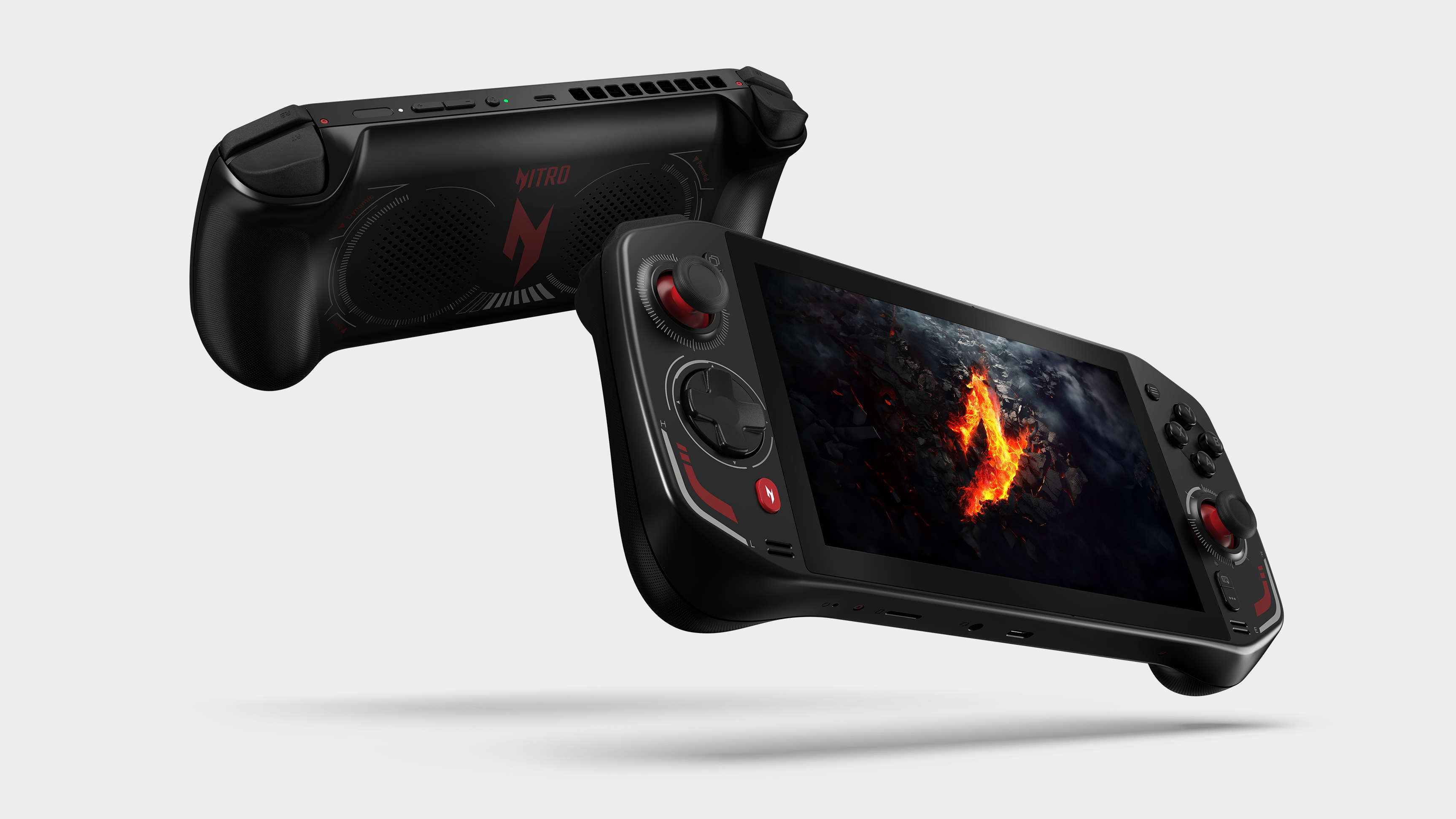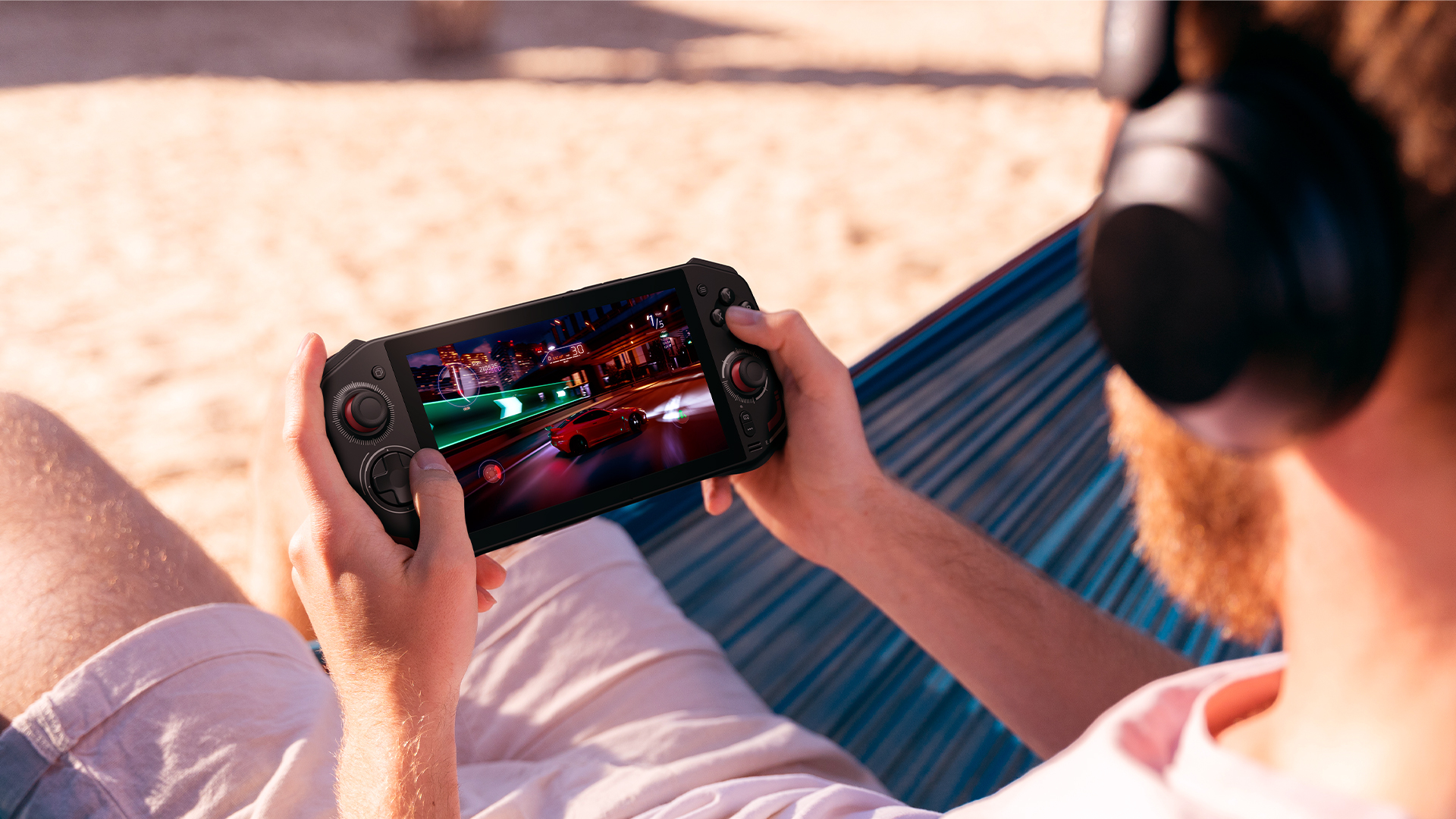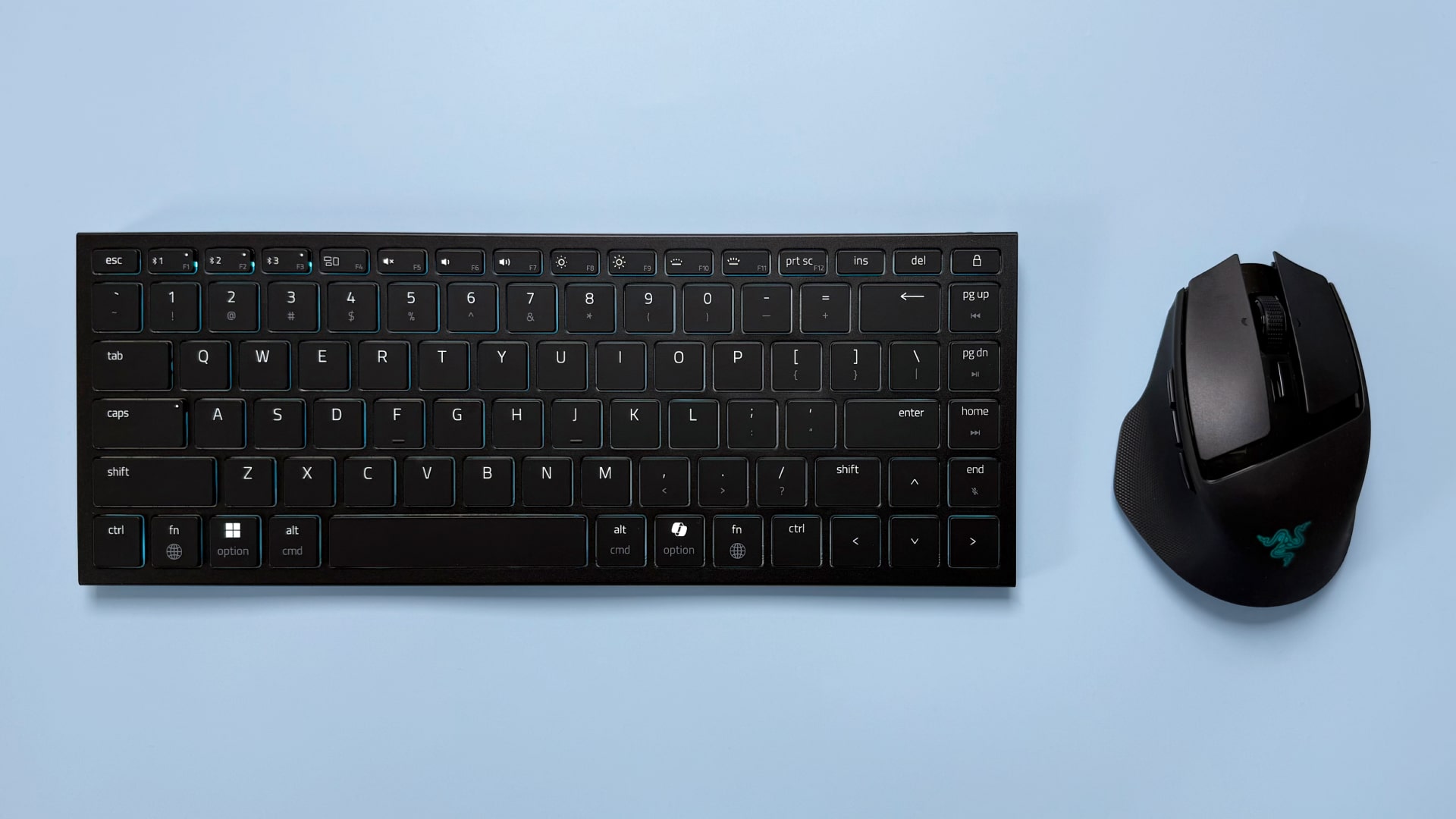Acer joins the handheld gaming PC market with the Nitro Blaze 7 but it's late and lacking innovation
Maybe there's a bit too much competition now.



The handheld gaming PC market has become so much more interesting in the last few years in the wake of the Steam Deck, yet with all that competition can come a miasma of forgettable entries. Not one to be easily outdone, Acer has just come crashing onto the scene with its own "AI-accelerated" build, whatever that means to you.
Starting with its design language, it takes a little bit from pretty much all of the best handheld gaming PCs out there, like the angular corners of Ayaneo's 2021 models, the stick and button layout of the OneXPlayer OneXFly, and the accents of Asus' ROG Ally offerings.
Interestingly, it's fitted with a Ryzen 7 8840HS, which is a more laptop-oriented version of the 8840U you will find in the higher-end Ayaneo Air S1. Thanks to its underlying architecture, this is very similar to the Ryzen Z1 Extreme in the Asus ROG Ally X, and the Ryzen 7 7840U which has previously dominated the market. This less configurable laptop chip, however, seems like a bit of a strange choice from the offset, as the HS chip is generally designed for rigs with a bigger power draw and more robust cooling systems.
Essentially there's little material difference in the actual silicon—it's still an eight-core Zen 4 chip with 16 threads and the mighty Radeon 780M iGPU at its heart—but the key difference is in the configurable TDP (cTDP) of the chip. As the Ryzen 7 8840HS is designed for larger laptops, with bigger batteries and larger cooling arrays, it's specced out to be running between 20 and 30 W, whereas the Ryzen 7 8840U is the low-power version, aiming at thin and lights and handhelds, and will go down to 15 W as standard.
In reality, given the right software controls, you can run Ryzen-based handhelds right down to super low power states even below the rated 15 W cTDP. As the silicon is essentially the same between the two chips, it is possible Acer has its own application which can pull the 8840HS down to that level, too. Still, seems an odd choice out of the gate.
The Acer Nitro Blaze 7 is a decent bit smaller than the rather big Steam Deck, measuring 25.6 cm in width, 11.35 cm in depth, and 2.25 cm in height. It also comes in at 670 g, which is a single gram above the Steam Deck. However, rather interestingly, it appears to come with a full-size SSD in the back, which suggests it could be upgradable to some larger capacity. To round this out, it will also come with 16 GB of LPDDR5 RAM, capable of a transfer rate of 7500 MT/s.
Moving onto the screen, it's a 7-inch full HD display with IPS. The screen also comes with a max brightness of 500 nits, a refresh rate of 144Hz, and a 7 ms response time, though we don't know more about how that response time is measured. To enable a smoother experience, it also has FreeSync Premium, AMD's screen tear software.
Keep up to date with the most important stories and the best deals, as picked by the PC Gamer team.
| Name | Acer Nitro Blaze 7 |
| Processor | AMD Ryzen 7 8840HS |
| Graphics | AMD Radeon 780M |
| Screen | 7 inch Full HD IPS Display |
| Peak brightness | 500 nits |
| Response time | 7 ms |
| Refresh Rate | 144Hz |
| Memory | 16 GB LPDDR5x |
| Storage | Up to 2 TB |
| Battery | 50w Li-Polymer |
| Wi-Fi and Bluetooth | Wi-Fi 6E and Bluetooth 5.3 |
| Weight | 670g |
| Dimensions | 25.6 cm width, 11.35 cm depth, 2.25 cm height |
We still don't have a final price for the Blaze 7, nor do we have a hint of a release date, but it's going to have to be incredibly competitively priced to be able to make a dent in what is already a pretty crowded market. And a market that already has some second generation devices hitting the shelves.
While the Acer handheld looks pretty nice and has specs to match other handhelds on the market, I don't yet see what makes the Acer Nitro Blaze 7 stand out. The specs are about you would expect, but the specific AMD chip seems like a strange choice for a device that needs to be cool and power efficient. There's certainly not much here that Acer's competitors haven't already done first, and some places where the others have already seen the error of their ways; notably the Acer's miserly 50 Wh battery. Battery capacity is one area where both Asus with the Ally X and MSI with its new Claw 8 devices have made big changes, and this is absolutely one place where the Blaze 7 feels very much like a first generation product.
Best handheld gaming PC: What's the best travel buddy?
Steam Deck OLED review: Our verdict on Valve's handheld.
Best Steam Deck accessories: Get decked out.

James is a more recent PC gaming convert, often admiring graphics cards, cases, and motherboards from afar. It was not until 2019, after just finishing a degree in law and media, that they decided to throw out the last few years of education, build their PC, and start writing about gaming instead. In that time, he has covered the latest doodads, contraptions, and gismos, and loved every second of it. Hey, it’s better than writing case briefs.


